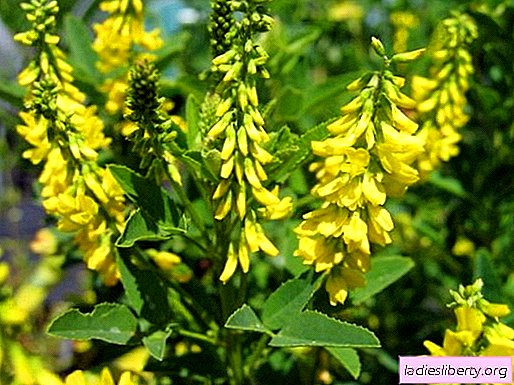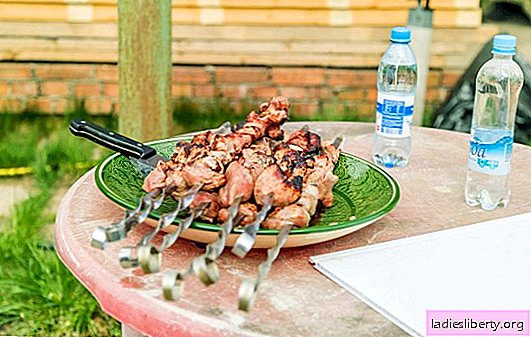
Chubushnik is popularly called false jasmine.
During the flowering period, the shrub not only looks elegant, but also exudes a pleasant aroma.
Various crafts were made from wood of mock-maker: pipes, pipes.
In one place, the bush has been growing for decades, without requiring special care. Chubushnik can be grown in various regions of the country, the plant tolerates frosts well.
Chubushnik characteristic
Chubushnik belongs to the Gortenziev family, which has more than 70 species of plants.
Shrub shoots are covered with very hard brown brown wood, leaves are elongated or ovate. The flowers of mock up are simple, very fragrant, collected in brushes. There are varieties of shrubs with terry inflorescences. During the flowering period, drooping shoots are densely covered with flowers that form at the ends of branches. A distinctive feature of the bush is its winter hardiness. Even if in the harsh winter the aerial part of the plant suffers, in spring, after pruning, a powerful root system will give rise to new shoots. The shrub is quickly restored and gets the same decorativeness.
Varieties and types of mock up (photo)
1. Chubushnik ordinary.

In this species, simple small flowers are collected in inflorescences that densely cover the bush. The color of the flowers is pale cream. The plant has a pleasant aroma.
2. Chubushnik is small-leaved.
A short bush up to 1.5 meters high. White flowers with pineapple aroma bloom within a month.
3. Crown mocker.

The plant does not lose its decorative effect for 25 years. The flowering of the bush is memorable, large white flowers collected in inflorescences cover the plant abundantly. An adult plant forms a tall, sprawling shrub.
4. Chubushnik fluffy.
The shrub got its name for leaves whose lower side is pubescent. Flowering of this species begins in July. Flowers are fragrant, terry-shaped.
5. The mockery of Lemoine.

The most beautiful shrub of all available. This is a hybrid between small-leaved varieties and ordinary varieties.
All varieties of shrubs are deciduous plants. They differ in terms of flowering, aroma and leaf shape.
Growing mock up on the site
Experienced gardeners who are engaged in the cultivation of shrubs, highlight several key points in the cultivation.
Location selection
For a mock-up, it is necessary to select a bright sunny place where the plant will bloom and smell well. This shrub is not for shady areas of the garden. Without adequate lighting, the shoots are pulled out and the flowers become inconspicuous.
The most optimal place for planting will be a sunny, dry lawn, where there is no stagnation of groundwater, the high occurrence of which adversely affects the plant.
Planting soil
The soil on the site in its composition should resemble forest land. It should include sand, leaf humus, turfy soil. Heavy soils that impede the access of oxygen and water pre-drain.
Poor soils need to be enriched with organic matter, introducing it during planting and during growth.
How and when to plant seedlings?
The best time to plant a bush is autumn, from mid-September to mid-October. Spring planting should end before the buds swell.
If several plants are planned to be planted, then the distance between them is about 150 cm, depending on the size of an adult shrub. To create a hedge, the mock-up is planted a little denser, at a distance of up to 70 cm.
The landing pit should be spacious, up to 60 cm deep. A good drainage layer is made at the bottom of the pit. The root neck should be at ground level. After planting, the plant needs to be watered well. The soil around the trunk must be mulched with sawdust, a layer of up to 4 cm.
Chubushnik care: watering, top dressing, pruning, transplanting
Chubushnik does not tolerate drought. On hot summer days, the shrub needs regular watering. The leaves will say that the plant suffers from a lack of moisture in the soil: they lose their decorative effect and hang.
Watering the plants should be carried out according to the following scheme.
1. During the growing season, bushes need weekly watering. Water consumption per plant - up to 3 buckets.
2. During the flowering period, the frequency of watering increases. If necessary, it is carried out every day. The rate of water is also increasing.
After watering, it is necessary to loosen the soil, remove weeds. A good layer of mulch will help reduce the number of weeds, which will preserve the moisture of the earth and inhibit the growth of weeds.
Shrub top dressing
For good growth and lush flowering, the mock-up planting needs top dressing. As a rule, they are made in the spring. A bucket of dung infusion is used for one adult plant.
After flowering, the bush needs to be fed with ash infusion. This will help restore the energy spent on the formation of flower brushes. Ash can be introduced into the near-stem circle during loosening of the soil, after which the plant is abundantly watered.
Mineral fertilizers are used only after several years of cultivation. In the spring, urea, potassium sulfate and superphosphate are added. After flowering, fertilize the shrub with potassium sulfate.
Mowing
In order for the bush to please lush flowering every year, it must be regularly pruned. The secret of the plant is that an abundance of flowers is formed on last year's strong shoots. On weak and old branches, flower buds are not laid. After flowering, the shoots need to be cut to the young growth of this year. Such pruning will make the shoots stronger, which will affect the next flowering.
Sanitary cleaning of the shrub is carried out as necessary. All broken branches that grow inside the bush and lead to thickening, sick and weak shoots are subject to removal.
Every few years, the shrub needs a rejuvenating pruning. Spend it in the spring, before the sap flow. Several powerful trunks are shortened by 1/3 of the length, the remaining shoots are cut at the level of the soil. By autumn, mock-up will increase enough shoots from sleeping buds.
Shrub transplant
An adult plant tolerates transplanting well, however, the year of flowering will be lost. The bush is prepared for transplanting in advance: some of the old shoots are cut, the remaining branches are shortened. When the plant is ready for transplanting, it is dug up and placed in a new place, abundantly watering the soil. It is better to transplant in the fall.
Chubushnik Care: Disease and Pest Prevention
Chubushnik is susceptible to attack by pests, among which the most dangerous are:
• aphids;
• weevil;
• spider mite.
Pest control begins with preventive spraying, which is carried out several times with an interval of 10 days. An aphid solution is used against aphids. All drugs are bred exactly according to the instructions, avoiding overdose.
Chubushnik in winter: preparing for frost
After autumn cleaning, the soil around the shrub is mulched with a thick layer of sawdust. The plant tolerates frosts well and does not need shelter. If the tips of the branches fall under spring frosts, then after pruning, the bush will soon recover.











